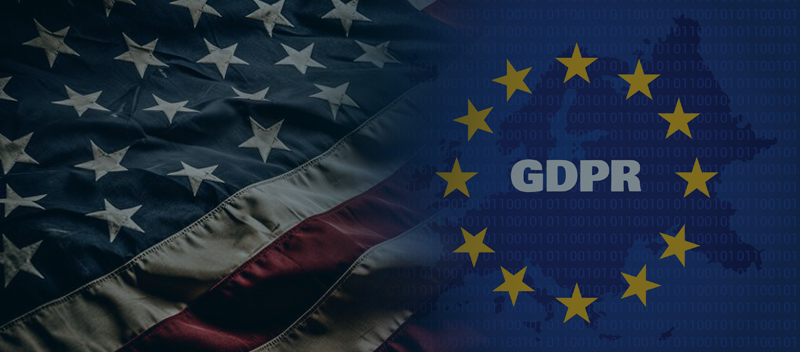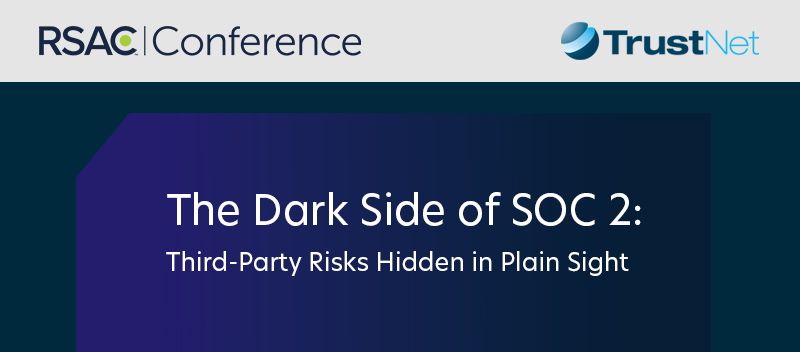GDPR Compliance for US Companies: Requirements and Implementation Guide

While the General Data Protection Regulation (GDPR) is an EU regulation, it applies to any company — regardless of location — that processes or handles the personal data of EU citizens. This makes compliance essential for US businesses offering goods, services, or operating in the European market.
At its core, the GDPR prioritizes data privacy and protection through principles such as:
-
- Lawfulness, fairness, and transparency in data processing.
- Limiting data collection to specific, legitimate purposes.
- Ensuring process-wide accountability, security, and accuracy.
Noncompliance may result in major repercussions, such as hefty penalties, harm to one’s reputation, and even a decline in client confidence.
This guide helps you safeguard your business, reduce risks, and stay compliant by breaking down the GDPR’s fundamental requirements and attainable implementation procedures.
Core GDPR Requirements for US Companies
Below is a closer look at the core GDPR requirements that businesses must adhere to:
— Data Subject Rights
GDPR grants individuals several rights concerning their personal data. US companies must understand and uphold these rights to remain compliant:
-
- Right of Access: Individuals can request access to their personal data to understand how it is being processed, where, and for what purpose. The company must provide a copy of the data upon request.
- Right to Rectification: If personal data is inaccurate or incomplete, individuals can request corrections or updates to ensure accuracy.
- Right to Erasure (Right to be Forgotten): Individuals may request the deletion of their personal data, especially when it’s no longer necessary for the purpose it was collected or they withdraw their consent.
- Right to Restriction of Processing: Data subjects can seek to limit how their information is used, such as during disputes over the accuracy or legality of processing.
- Right to Data Portability: Individuals have the right to transfer their data between organizations in a structured, machine-readable format.
- Right to Object to Processing: Individuals can object to certain uses of their data, such as direct marketing or profiling.
Each of these rights emphasizes transparency and user control, requiring businesses to implement policies and workflows to respond to requests efficiently.
— Data Processing Agreements (DPAs)
When engaging third-party processors to handle personal data, companies must have a Data Processing Agreement (DPA) in place. This contract outlines the roles and responsibilities of all parties and safeguards data privacy.
Key clauses in a DPA include:
-
- Purpose of Processing: Clearly describe how and why the data will be processed.
- Security Measures: Outline technical and organizational measures to protect data.
- Sub-Processors: Include provisions for approval and monitoring of additional processors.
- Data Subject Requests: Define processes to assist the controller in fulfilling data subject rights.
- Breach Notification and Liability: Establish terms for reporting breaches and accountability for damages.
DPAs formalize compliance and ensure processors align with GDPR standards. Without them, companies risk liability for non-compliance.
— Data Breach Notification
GDPR dictates clear and strict procedures for notifying authorities and affected individuals in the event of a breach:
-
- Notify Authorities and Data Subjects: Serious breaches that pose a risk to individuals’ rights and freedoms must be reported to supervisory authorities within 72 hours. If the breach has significant consequences, affected individuals must be informed without undue delay.
- Steps After a Breach: Businesses should contain the breach, investigate its cause, assess the impact, and take corrective action to prevent recurrence. Comprehensive records of the breach and the response must be maintained.
Failing to meet these requirements can result in significant fines and reputational harm, making incident response plans essential.
— International Data Transfers
Transferring personal data beyond the EU introduces additional challenges under GDPR. Mechanisms for lawful data transfers include:
-
- Standard Contractual Clauses (SCCs): Pre-approved legal agreements that ensure data protection standards are upheld outside the EU.
- Binding Corporate Rules (BCRs): Internal rules approved by EU regulators for multinational companies to transfer data between their entities.
- Privacy Shield: While once used, it was invalidated in 2020. New frameworks, like the EU-US Data Privacy Framework, replaced it.
- Adequacy Decisions: Countries recognized by the EU for providing equivalent data protection standards (e.g., Switzerland, Japan, New Zealand) may facilitate transfers without extra safeguards.
Companies must also perform transfer impact assessments, which evaluate the risks of transferring data to third countries and implement mitigating measures when necessary.
For more info on our GDPR Compliance services, Click Here
Implementing GDPR Compliance in US Companies
Here’s how businesses can effectively implement GDPR compliance:
— Data Mapping and Inventory
To start, companies need a clear understanding of the personal data they process. This involves two key actions:
-
- Identifying and Documenting Personal Data: Catalogue all types of personal data collected, such as customer information, employee records, and marketing data. Document where and how it is stored, processed, and shared.
- Conducting a Data Flow Analysis: Map out how personal data moves within your organization and beyond it. This helps identify potential risks and ensures compliance with GDPR’s transparency and accountability principles.
A thorough data mapping process serves as the foundation for building a robust compliance framework.
— Privacy Impact Assessments (PIAs)
Privacy Impact Assessments are critical when processing activities are likely to result in high risks to individuals’ rights and freedoms.
- When are PIAs Required?
-
- A PIA is mandatory for activities involving sensitive data, large-scale data processing, or innovative technologies like AI.
- How to Conduct and Document a PIA:
-
- Begin by identifying potential risks to personal data privacy. Assess the likelihood and severity of these risks and implement measures to mitigate them. Document each step of the process to demonstrate compliance in case of regulatory audits.
PIAs offer a proactive approach to identifying vulnerabilities and setting up safeguards before they become compliance issues.
— Appointing a Data Protection Officer (DPO)
Not every US company will need a DPO, but certain circumstances make this role essential:
- When is a DPO Required?
-
- A DPO is mandatory if your core activities involve monitoring individuals on a large scale or processing special categories of data, such as health or biometric information.
- Responsibilities of a DPO:
-
- Ensure the company complies with GDPR regulations.
- Act as the point of contact for supervisory authorities and data subjects.
- Monitor data protection practices, conduct audits, and provide GDPR training to staff.
By having a DPO, companies can centralize accountability and expertise on data privacy matters.
— Employee Training and Awareness
Employees play a crucial role in GDPR compliance. Without proper training, even a well-structured compliance program can fail.
- Training on GDPR Requirements:
-
- Equip all staff with a basic understanding of GDPR principles, including data subject rights and breach reporting. Teams handling personal data should receive in-depth instruction aligned with their responsibilities.
- Best Practices for Data Protection:
-
- Train employees to use secure passwords, recognize phishing attempts, and handle personal data responsibly.
Consistent training builds a company-wide culture of compliance, reducing the risk of unintentional violations.
— Developing a GDPR Compliance Program
Building a thorough compliance program ensures GDPR is integrated into your organization’s operations.
- Creating a Comprehensive Compliance Framework:
-
- Establish clear rules, procedures, and tools for managing personal data. This includes policies for secure storage, data transfer protocols, and designated roles for data management.
- Implementing and Maintaining a Data Protection Policy:
-
- Your policy should outline how your company collects, processes, stores, and deletes personal data. Continuously review and update it to address regulatory changes and emerging risks.
An effective compliance program not only ensures adherence to GDPR but also fosters trust among customers, partners, and other stakeholders.
US-EU Data Privacy Framework
The US-EU Data Privacy Framework (DPF) was designed to support transatlantic commerce by offering reliable mechanisms for transferring personal data from the European Union, United Kingdom, and Switzerland to the United States. This framework ensures compliance with EU, UK, and Swiss laws, making it an essential tool for US businesses that deal with international personal data.
Overview of the Framework
The DPF enables US companies to legally receive personal data from the European Union and European Economic Area (EU/EEA), the UK (including Gibraltar), and Switzerland. The framework builds on key adequacy decisions, including those by the European Commission on July 10, 2023, and the UK’s adequacy regulations on October 12, 2023. With the addition of Switzerland’s recognition in September 2024, the DPF facilitates seamless data flows while maintaining strict data protection standards.
Participating organizations are bound by well-defined principles designed to align with laws in these regions. Compliance with these principles is critical to ensure legality and mitigate risks associated with international data transfers.
Benefits for US Companies
Participation in the DPF offers several advantages for US companies, particularly those with international operations or customers. Benefits include:
-
- Seamless Data Transfers: Companies can legally transfer personal data from the EU, UK, and Switzerland without undertaking separate contractual arrangements or additional legal burdens.
- Facilitating Transatlantic Commerce: With data transfers made simpler, businesses can focus on growth, customer engagement, and partnership building across borders.
- Maintaining Compliance: By adhering to the framework’s principles, US companies can avoid penalties associated with GDPR violations while ensuring transparency.
- Enhanced Trust: Demonstrating commitment to global privacy standards can significantly boost credibility with customers, partners, and regulators.
The framework simplifies cross-border operations while safeguarding both business interests and personal data.
Requirements for Participation
To participate in the US-EU Data Privacy Framework, US companies must follow guidelines to demonstrate compliance with the framework’s principles. Key requirements include:
– Self-Certification:
Companies must self-certify to the International Trade Administration (ITA) within the US Department of Commerce. This involves publicly committing to comply with DPF Principles, making the commitment enforceable under US law.
– Adherence to DPF Principles:
Participating organizations are required to implement the following safeguards:
-
- Inform individuals about how their data will be processed.
- Include a clear declaration of adherence to DPF Principles in their privacy policy.
- Provide accessible dispute resolution mechanisms for addressing concerns or complaints.
Maintaining Data Integrity:
Companies must ensure personal data is used only for relevant purposes and retained no longer than necessary. This includes cooperating with ITA inquiries and complying with accountability requirements when data is shared with third parties.
- Accountability for Third-Party Transfers
- Ensure the third party agrees to provide the same level of privacy protection.
- Act promptly to remediate any unauthorized use of data.
- Annual Recertification:
- Organizations must annually re-certify their participation to remain on the Data Privacy Framework List. Failure to comply results in removal from the list and companies must cease making claims about their participation in DPF.
- Transparency and Enforcement:
-
- Companies must make relevant compliance reports public if they become subject to enforcement actions by authorities like the Federal Trade Commission (FTC).
By participating in the framework, US businesses not only demonstrate their commitment to international standards but also position themselves for long-term growth in a globalized economy.
Sustaining GDPR Compliance: A Continuous Journey
GDPR compliance is essential for US businesses handling EU personal data. From understanding key requirements to maintaining a culture of compliance, each step ensures legal and operational integrity. Proactive efforts not only mitigate risks but also enhance reputation and customer trust.
Schedule a free consultation with TrustNet today to ensure your business meets GDPR standards.
Resources
To strengthen your understanding and implementation of GDPR compliance, explore these resources:
Official GDPR Resources:
U.S. Government Resources:
Cybersecurity Resources and Publications:
Explore detailed guidance and emerging trends in cybersecurity and compliance through platforms like TrustNet’s Blogs and Whitepapers for expert analysis and actionable advice.
Subscribe to the TrustNet Newsletter
actionable cybersecurity strategies, and TrustNet’s cutting-edge solutions.




